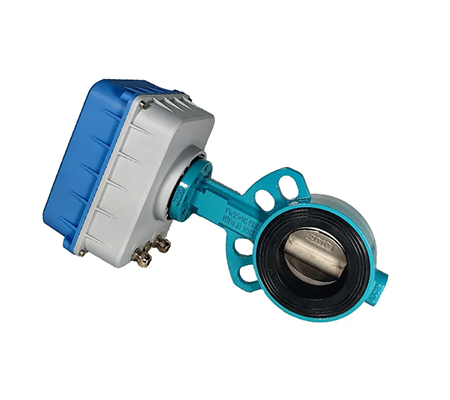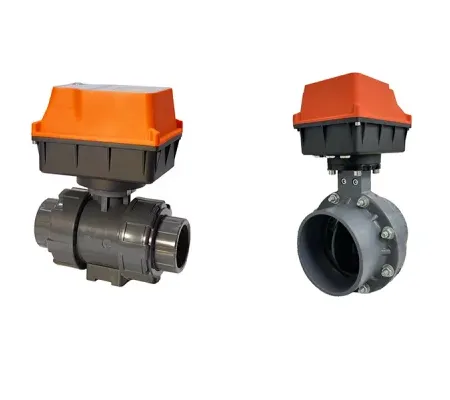Avoid your inquiry is delay response, please enter your WhatsApp/WeChat/Skype along with the message, so we can contact you at the very first time
We will reply you within 24 hours. If for urgent case, please add WhatsApp: +8613188899036, or WeChat: 0531-87968777. Or call 0531-87968777 directly.
* We respect your confidentiality and all information are protected. We will only use your information to respond to your inquiry and will never send unsolicited emails or promotional messages.
Manual valve systems slow down your process, risking human error and inefficiency. When energy bills spike or downtime disrupts operations, the culprit is often outdated manual or pneumatic actuators. Switch to electric actuator valves for a smarter, reliable, and energy-saving solution.
An electric actuator valve uses electrical energy to precisely control the opening and closing of valves. Unlike manual or pneumatic actuators, these devices offer enhanced automation, integration with modern building and industrial systems, and low-maintenance operation.
Electric actuator valves automate valve operation using electrical energy. An electric actuator is mounted on a valve—typically a ball valve or butterfly valve—and turns electrical input signals into rotary or linear motion. This enables the valve to open, close, or modulate automatically, rather than requiring manual adjustment.
| Component | Function |
|---|---|
| Electric Motor | Converts electrical energy into motion |
| Gear Assembly | Transfers torque to the valve stem |
| Limit Switches | Provide position feedback |
| Manual Override | Allows manual actuation in emergencies |
Quote:
“Electric actuator valves are at the core of modern automation, replacing manual labor with precision control.”
Fact:
Electric actuators can operate with 24 VDC, 120 AC, or even higher voltages, suiting a wide range of industrial and building applications.

What Is an Electric Actuator Valve
1. Precision and Control
Electric actuator valves deliver precise flow modulation, thanks to continuous voltage signal or reversing continuous signal control. This means better accuracy and safer, more reliable system operation.
2. Energy Efficiency
Unlike pneumatic actuators requiring compressed air, electric actuators only use power when moving. This reduces overall energy consumption—a critical factor for industrial plant managers and public infrastructure projects aiming for sustainability.
3. Seamless Integration
Modern electric actuator valves offer digital communication (e.g., RS485, Modbus) and smart accessories for valve automation needs. Integration with SCADA, BMS, and other automation platforms is straightforward.
4. Reliability and Safety
Equipped with overload protection, fail-safe options, and certified by UL429, CSA C22.2, and other international standards, electric actuator valves ensure safe operation even in harsh industrial environments.
Case Study Example:
A municipal water treatment plant replaced manual valves with electric valve actuators, resulting in a 30% decrease in downtime and a 20% energy savings over 12 months.
Electric actuator valves are ideal for:
Table: Applications and Recommended Actuator Types
| Application | Recommended Valve | Actuator Type | Benefit |
|---|---|---|---|
| HVAC Automation | Butterfly valves | Electric rotary | Energy-efficient, reliable |
| Chemical Process | Ball valves | Electric linear | Precision, safety |
| Water Distribution | Control valves | Electric modulating | Automation, durability |
| Smart Buildings | Ball/butterfly valves | Compact electric | Seamless integration |
Bolded Key Stats:
Ball Valves
Butterfly Valves
Comparison Table
| Feature | Ball Valve | Butterfly Valve |
|---|---|---|
| Shutoff | Excellent (tight seal) | Good |
| Size Range | Small to medium | Medium to very large |
| Pressure Rating | High | Medium |
| Cost | Higher | Lower |
| Maintenance | Low | Very Low |
Tip:
Choose ball valves for applications requiring high pressure and tight shutoff. Use butterfly valves for lower pressure and larger flow requirements.

Ball Valves vs. Butterfly Valves
Step 1: Define Application Requirements
List system specs: fluid type, temperature, pressure, flow, and required actuation speed.
Step 2: Select Valve and Actuator Type
Step 3: Consider Accessories and Integration
Step 4: Check Ratings and Certifications
Checklist Table:
| Criteria | Yes/No | Note |
|---|---|---|
| Torque adequate? | ||
| Enclosure rated? | IP67/4X, aluminum? | |
| Duty suitable? | 50%, 75%, 100%? | |
| Voltage compatible? | 24 VDC, 120 AC, etc.? | |
| Certifications? | UL429, CSA C22.2 |
Modern electric actuator valves feature a compact, rugged design that fits tight installation spaces, yet delivers powerful torque for heavy-duty applications. Thanks to precision engineering and robust aluminum enclosures, these actuators maintain reliability under harsh industrial conditions.
Key accessories often include:
List of Advanced Accessory Benefits:
Quote:
“A compact actuator isn’t just about size—it’s about delivering duty cycle, torque, and reliability in any environment.”
Electric actuator valves are engineered for flexibility in power supply, mounting, and actuation:
Table: Common Electric Actuator Specifications
| Parameter | Typical Range | Suitable For |
|---|---|---|
| Voltage | 24 VDC, 120 AC | Building, industrial, infrastructure |
| Torque (Nm) | 5 – 1000+ | Ball valves, butterfly valves |
| Duty Cycle (%) | 50 – 100 | Process control, automation |
| Enclosure | IP67, NEMA 4X | Rugged, outdoor, hazardous areas |
Tip:
Always match actuator torque and duty cycle to the valve automation needs of your application to maximize performance and reliability.
Manual valve operation is slow, labor-intensive, and often error-prone. Electric actuator valves replace manual labor with safe, accurate, and repeatable actuation, enhancing efficiency and process control.
Valve automation is now standard in:
Step-by-step Valve Automation Upgrade:
Industry Insight:
“Actuators offer process control teams real-time data and the ability to remotely automate thousands of valves at once.”
Safety is at the heart of electric actuator valve design. Top features include:
Table: Certification and Safety Features
| Feature | Description |
|---|---|
| Fail-safe (spring/battery) | Returns valve to safe state on power loss |
| Overload Protection | Shuts off actuator if excessive force detected |
| Limit Switches | Stops actuator at precise open/close points |
| Certification | Meets global standards (UL429, CSA, IP67) |
Tip:
Look for actuators with clear documentation, rating, and test results to ensure suitability for your duty and environment.
Installation:
Operation:
Maintenance:
List of Common Maintenance Tasks:
Modern electric actuator valves are smarter than ever. Key trends include:
Chart: Adoption Rate of Smart Valve Automation (2017–2024)
Year | 2017 | 2019 | 2021 | 2023 | 2024
----------------------------------------------
% Install | 20% | 35% | 52% | 68% | 75%
(Source: Industry Process Control Survey, 2024)
Quote:
“Smart valve actuators are key components in Industry 4.0, making facilities more efficient, safer, and easier to manage.”
How does an electric actuator differ from a pneumatic actuator?
Electric actuators use electrical energy, while pneumatic actuators rely on compressed air. Electric options are quieter, require less maintenance, and integrate more easily with digital controls.
What is a duty cycle, and why does it matter?
Duty cycle indicates how long an actuator can run before resting. For high-frequency or continuous use, choose an actuator with a high duty rating (up to 100%).
Can I use an electric actuator valve outdoors?
Yes—if it’s rated for outdoor use (NEMA 4X or IP67) and equipped with weatherproof accessories like heaters and rugged enclosures.
What’s the role of limit switches in valve automation?
Limit switches signal when the valve has reached its open or closed position, protecting the actuator and ensuring accuracy.
Are electric actuator valves suitable for retrofitting existing systems?
Absolutely! With the right mounting accessories and electrical compatibility, electric actuators can easily upgrade manual or pneumatic setups.
Where can I find detailed product documentation?
Visit our proportional rotary actuator page for full documentation and technical support.
Need help with your next valve automation project?
Contact our engineering team today for a free technical consultation and documentation pack tailored to your needs.